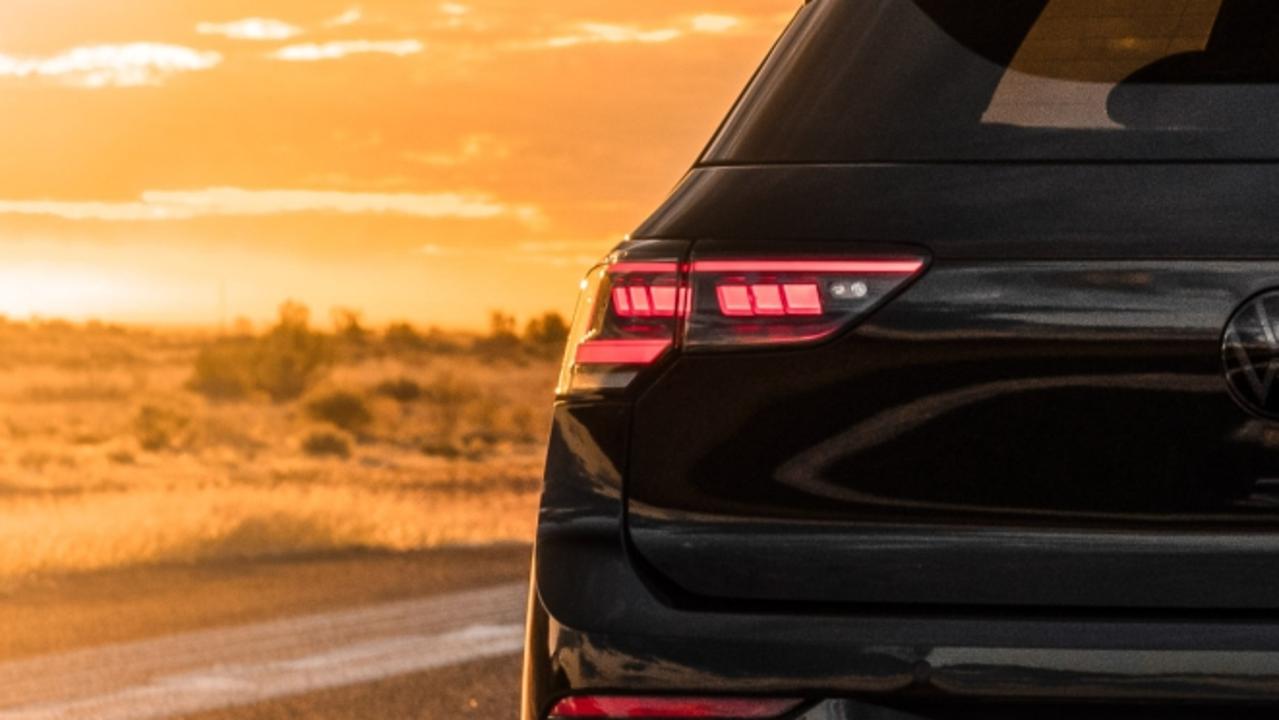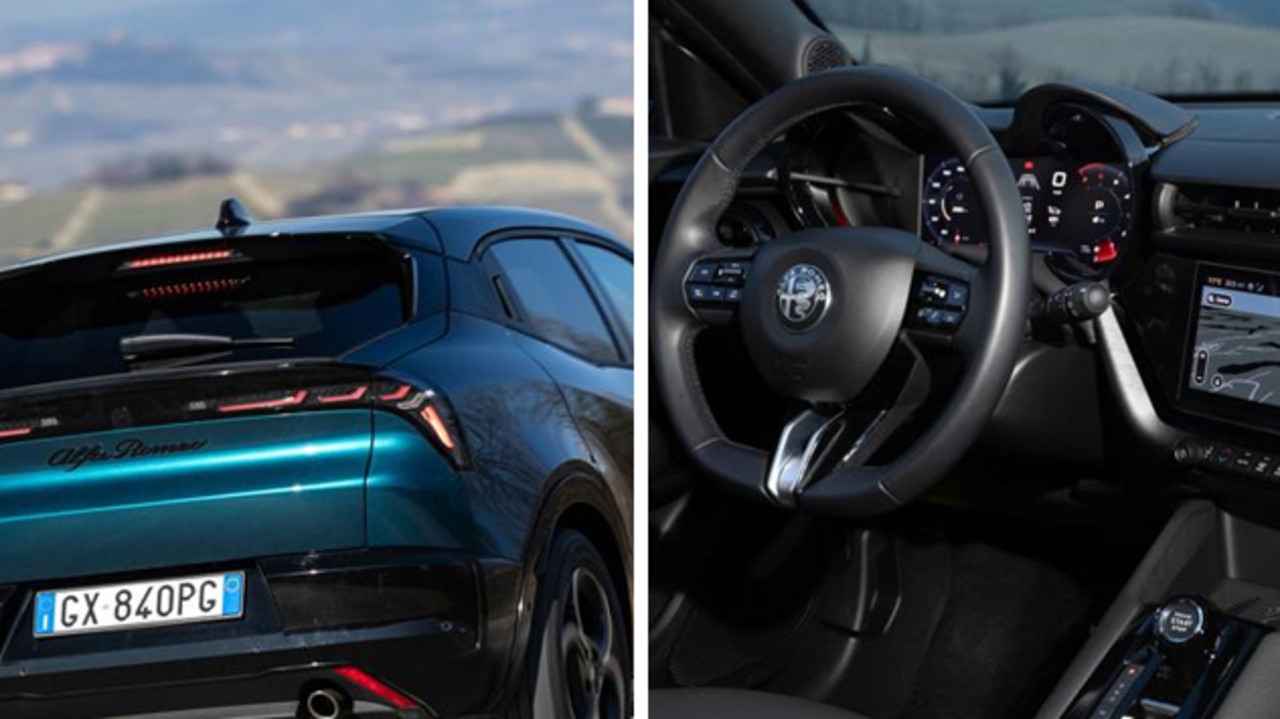2022 Kia EV6 GT-Line AWD review
Electric cars are still expensive, but this new weapon from an automotive giant makes a strong case to pay the price premium.
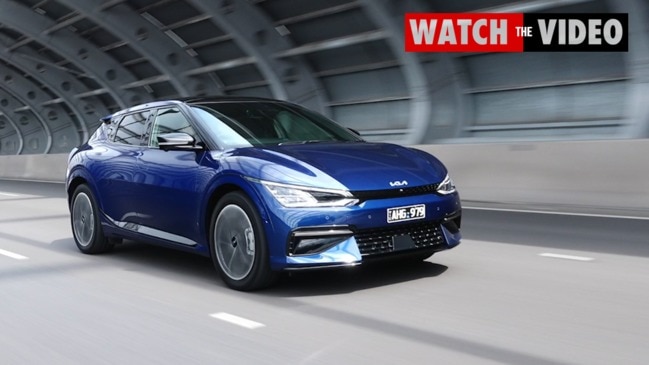
Some of the world’s biggest car makers are finally bringing their electric cars to market, we test Kia’s latest zero-emissions machine to see if it’s worth the big dollars asked for it.

DIFFERENT BOX, SAME CHOCOLATES
As far as the hardware you can’t see is concerned, including the EV motors, Kia’s EV6 is the same car as Hyundai’s Ioniq 5. However at the top end of the EV6 range, in the GT-Line dual electric motor/all-wheel drive model tested here, Kia “tunes” (if that’s the right word for an EV) it’s set-up for slightly more power (239kW) than the equivalent Ioniq 5 (225kW), though both produce the same 605Nm of torque and claim a pretty rapid 5.2 seconds for the 0-100km/h sprint. EV6 also has a slightly higher capacity battery (77.4kWh vs Hyundai’s 72.6kWh) and a claimed maximum range of 484km vs the Hyundai’s 430km. The Kia, at $82,990 plus on road costs, is significantly pricier than the $75,900 Hyundai.
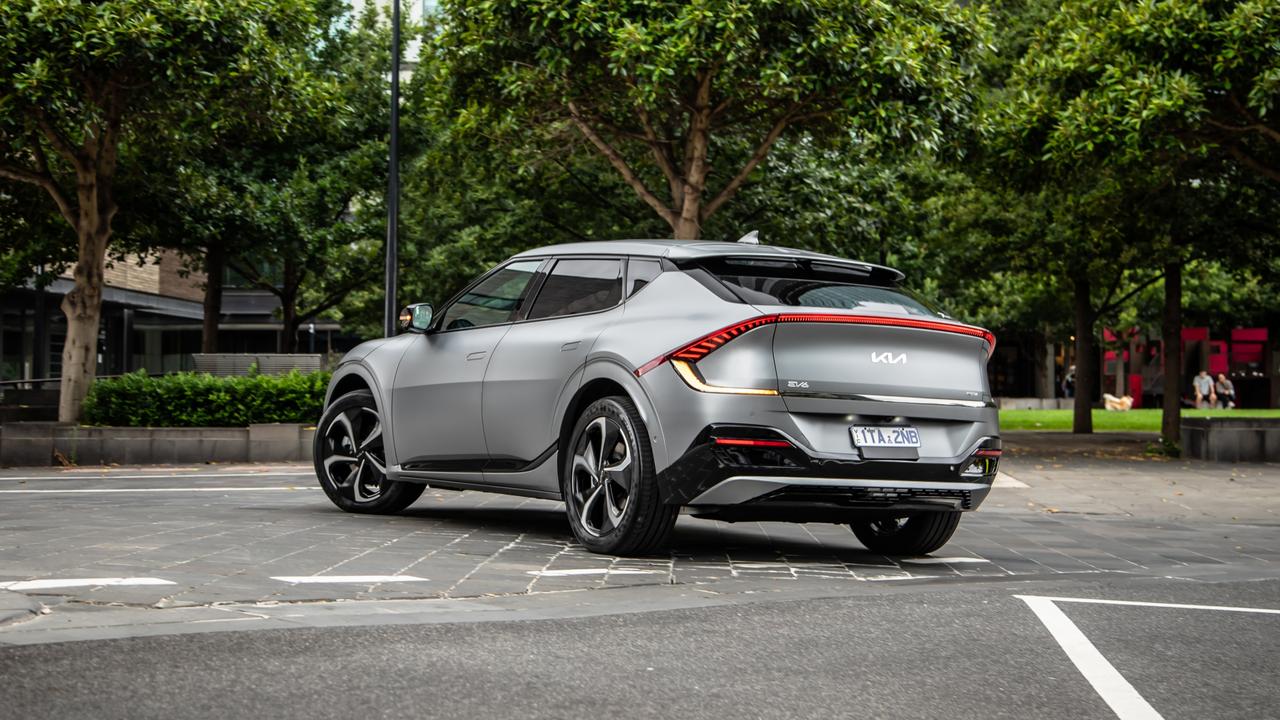
BACK TO THE FUTURE
This is in keeping with Kia’s evolving high voltage performance image, and the EV6
GT-Line AWD certainly looks the part, especially the test car’s elegant Moonscape Matte grey (a $1000 option) paired with 20-inch alloy wheels. Think 21st century DeLorean. EV6 GT-Line is no EV nerdmobile. It looks fast, expensive and interesting. Flush fitting door handles pop out as you approach. Pointy-end EV techno-chic interior decor features panoramic, hi-res infotainment and instrument screens, a slim, straight line dash to amplify a sense of space, LED mood lighting, the must-have “sustainable materials” trim (that is plastics instead of timber and leather) and a loaded standard equipment list that includes Meridian audio, remote parking with the key fob and heated/ventilated front seats.
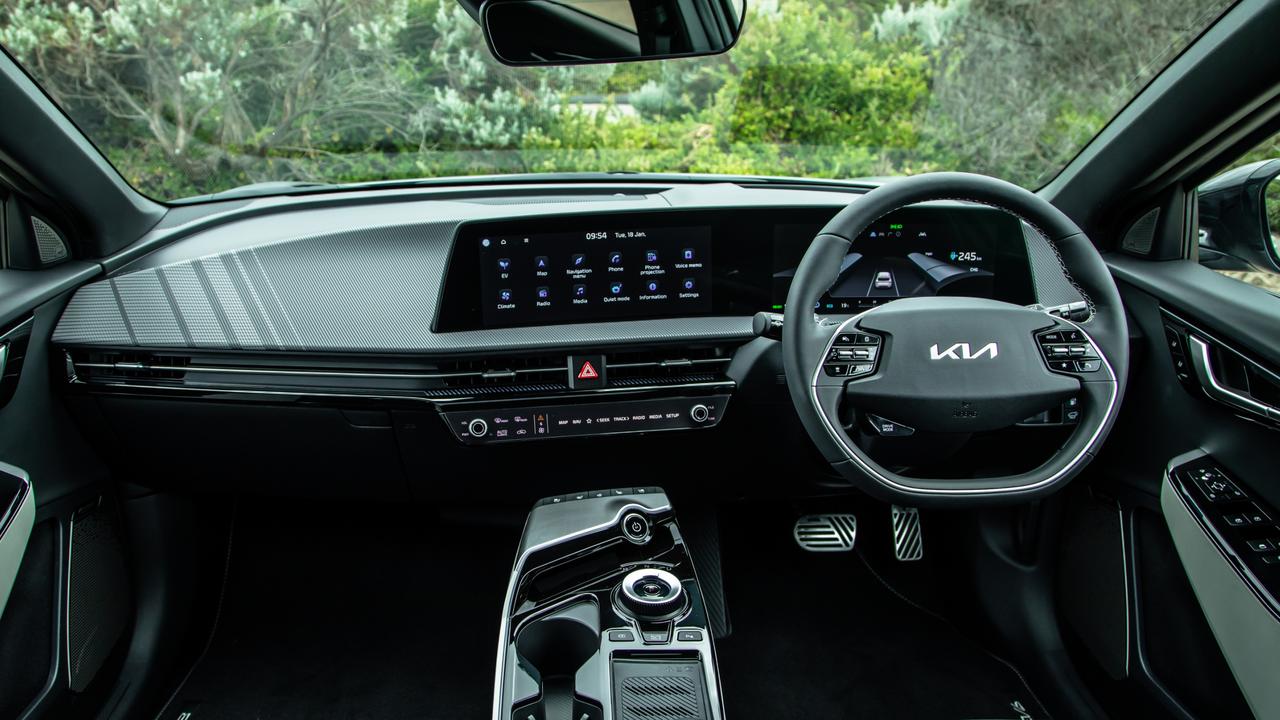
FAST, NOT FURIOUS
GT-Line AWD is a serious sports luxury sedan that just happens to be battery powered. It
feels quicker to 100km/h than Kia’s claim, especially in Sport mode where it absolutely leaps off the line and overtakes with supreme, silent stealth. Frequency-dependent suspension dampers – technology shared with Mercedes AMG and Maserati – work well on our rough roads at speed, exercising tight control over the car’s considerable 2.1 tonnes. The Kia feels completely planted and can hold its own with premium Euros. Demerits are heavy, numb steering, overly-intrusive lane-keep assist and a slightly terse ride at suburban speeds.
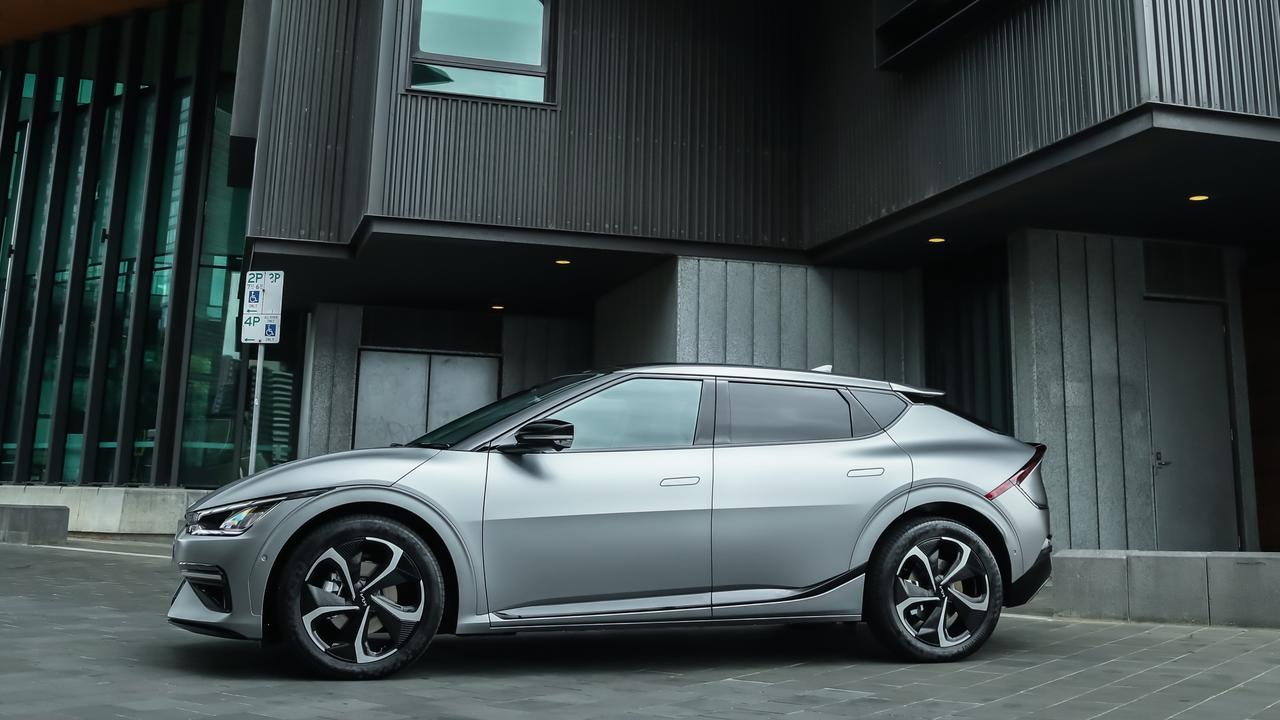
CHARGING UP
You can get close to Kia’s claimed 484km in town; on the open road, a realistic range is about 350km. Plug the Kia into a household power point and you’re looking at about three days to recharge the battery from 10 to 80 per cent. Kia’s 7.2kW wallcharger ($2886 installed) will do it overnight and a 350kW public fast charger can do it in a claimed 18 minutes. GT-Line also has vehicle to load (V2L) charging capability via interior and exterior plugs, which means you can charge appliances from the car’s battery.
WHAT’S IT WORTH?
Early EVs had terrible resale values simply because nobody was sure when, or indeed if,
they would become popular. There’s no doubt about that now, though, so EV resales are comparable to, if not better, that many petrol-powered cars. Redbook predicts trade-in values for the EV6 GT-Line AWD of 53 per cent after three years and 40 per cent after five,
which is close to the overall market average.



